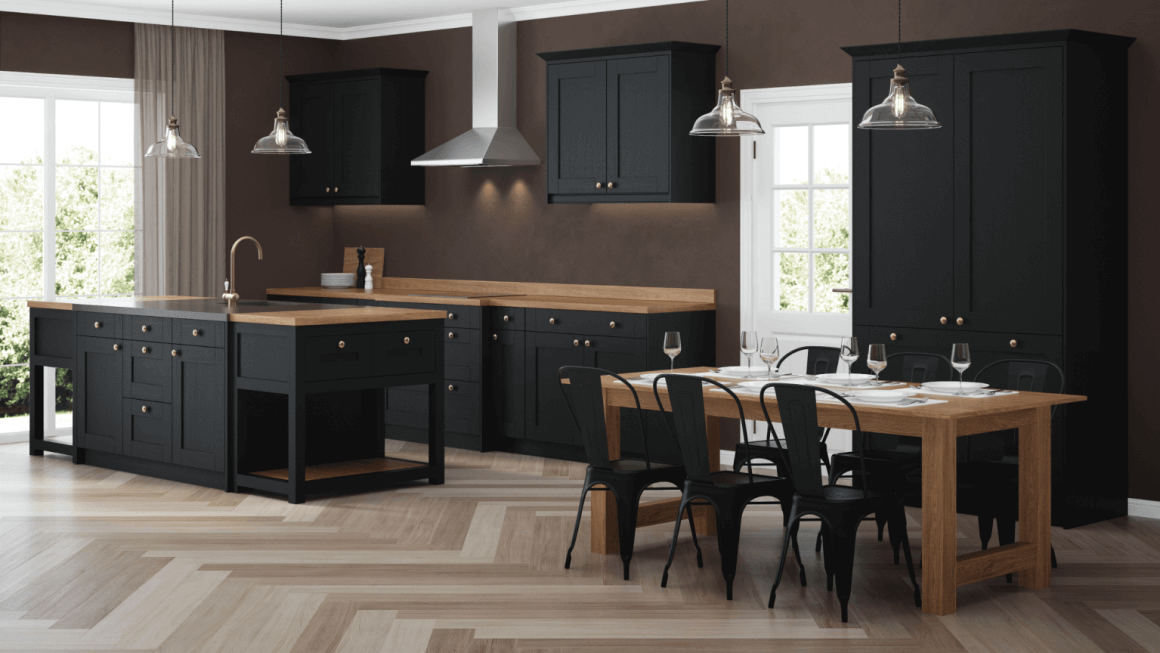If you’re looking to install a new door, first you’ll need to measure the structural opening to find out what size of door you need. Our simple guide will walk you through how to get the measurements right.
The standard size for hinged, single doors is 30 inches wide by 80 inches tall. Builders refer to this size door as the 2-6 door, because it is 2 feet, 6 inches wide. If you are lucky enough to live in a property that has doors this size, then you don’t have to worry about finding doors that fit well or cutting solid wooden doors down to size. You can simply purchase a slab door or buy a pre-hung door and frame safe in the knowledge that it will fit in the opening.
If your door is not a standard size, however, you will need to measure it carefully before ordering a door and shop a little more carefully to find one that is the perfect fit.
How To Measuring An Existing Door
If there is currently a door installed in the frame, then this makes the measuring process much easier. To measure an existing door:
Step 1: Measure the height of the door on both the right-hand side and the left-hand side. If the two measurements differ, take the tallest of the two as the height.
Step 2: Measure the width of the door, again take two measurements, across the top and across the bottom. Take the longest of the two measurements.
Step 3: Measure the thickness of the door from somewhere close to the door handle.
Step 4: Doors measurements are listed as height x width x thickness. When you are shopping for a door, choose one that is the closest fit, rounding up on the height or width if necessary. The closer the fit the better. Note that it is possible to sand down a small amount if a door is too tall, but you cannot take a significant amount of height off a hollow cored door.
Photo Credit: https://www.flickr.com/photos/rebuilding_together/
Measuring an Open Frame
Measuring an open frame is similar to measuring the door itself. Complete the same process as above but measure the gap where the door would be. Be sure to take into account the thickness of the carpet you plan to lay when measuring the height of the opening. When measuring the width of the door, take three measurements (top, middle, and bottom) and use the narrowest as the opening width.
The measurement you take for the thickness of the door will depend on whether you are buying an interior or exterior door. If you are buying an exterior door, then the thickness of the door should be the measurement from the sheetrock to the exterior sheeting. For an interior door, take the measurement from sheetrock to sheetrock.
How To Measure A Door Opening
If you don’t have an existing door or frame in place, things are a little bit more complicated. Start by measuring the height of the brickwork opening in 3 places, on the left-hand side, in the centre and the right-hand side. Do the same for the width, measuring at the top, middle and bottom. Note down each set of measurements and take the average of each set to determine the size of the door opening.
If you’re ordering a door frame, you’ll need to allow a fitting clearance to make sure the frame fits into the door opening without forcing. If the frame gets forced at any point during the fitting process it can be knocked out of alignment which makes door fitting and operation difficult. The usual clearance to allow is 10mm. Deduct this from your previous calculations to find out what size you should opt for when ordering a door complete with a frame.
Other Things to Consider
Finally, pay attention to the way the door opens. Stand so that the door opens towards you, and note whether the hinges are on the right or left-hand side of the door. If the hinges are on the left-hand side, then you should purchase a left-hinged door. If they are on the right, then you need a right-hinged door.
Take your time when measuring the door or frame, and be sure to double check all of your measurements. The old adage “Measure twice, cut once” exists for a reason! Taking a moment or two to make sure that you order the right size door will save you a lot of stress in the long run.






